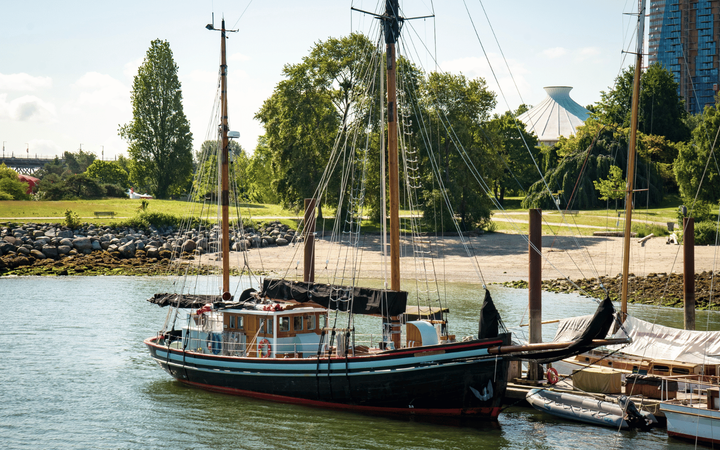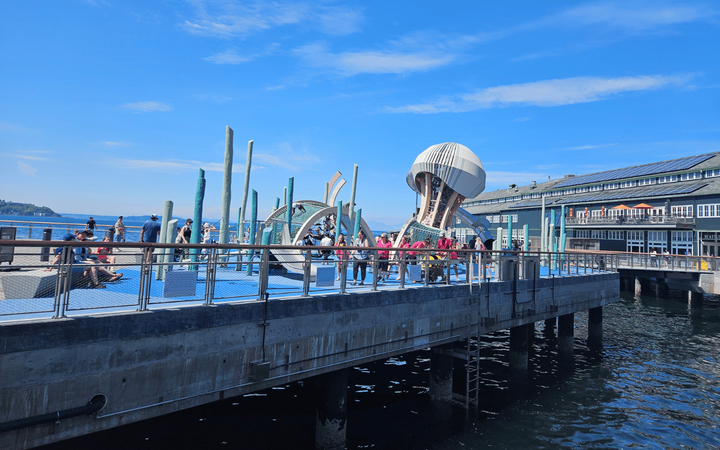Scenes from South Sound
Waterfront redevelopment, ever-present inflatable SUPs and cargo anchorages
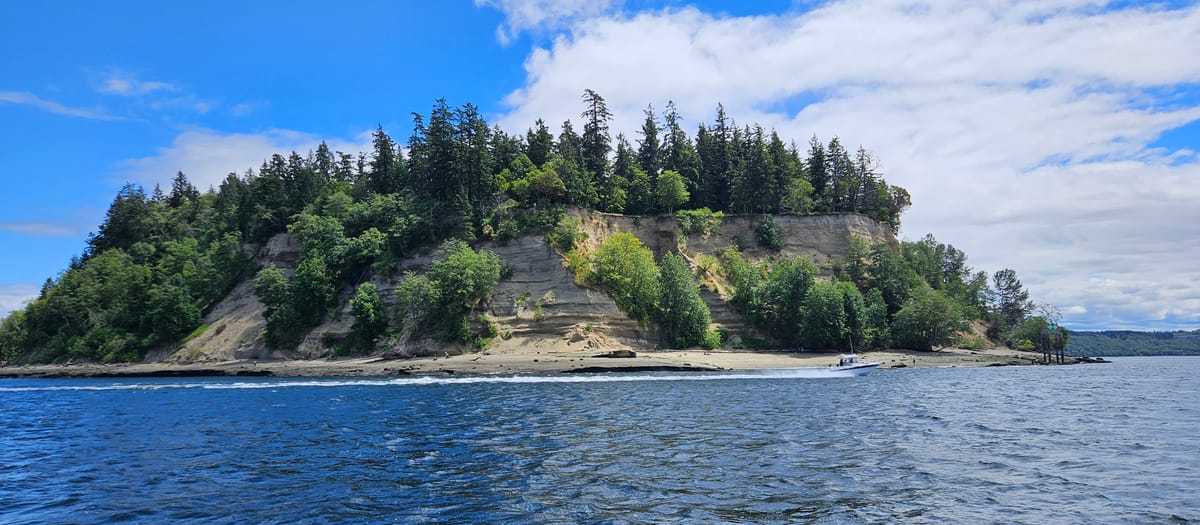
After submitting a grant application and completing another Future Tides tour (join me August 15 or September 18!), I enjoyed some time off in late June to slow down and take our sailboat for a cruise.
It's hard for me to completely turn off my maritime news radar though, especially while out on Puget Sound. Here are some things I spotted as we cruised south from Seattle:
Missing mooring balls
Maybe you've noticed some missing Washington State Park mooring buoys, especially on the west side of Blake Island. That's due to an extended closure of 35 recreational mooring buoys (out of 259 total). The mooring ball system limits some of anchoring's negative impacts on marine habitat while also making destinations more accessible for less experienced boaters. Aside from the bumps in the night and an analog payment system, the program plays an important role in the recreational boating ecosystem.
A sleepy Lakebay Marina
Major waterfront project spotted! I saw Lakebay Marina in-person for the first time which is slated for redevelopment through a partnership between the state parks, Washington Dept. of Natural Resources and RBAW's Marine Parks Conservancy (which got its start purchasing what would become Sucia Island State Park). While this corner of Mayo Cove is quiet for now, the vision is for it to be a boating hub once again.
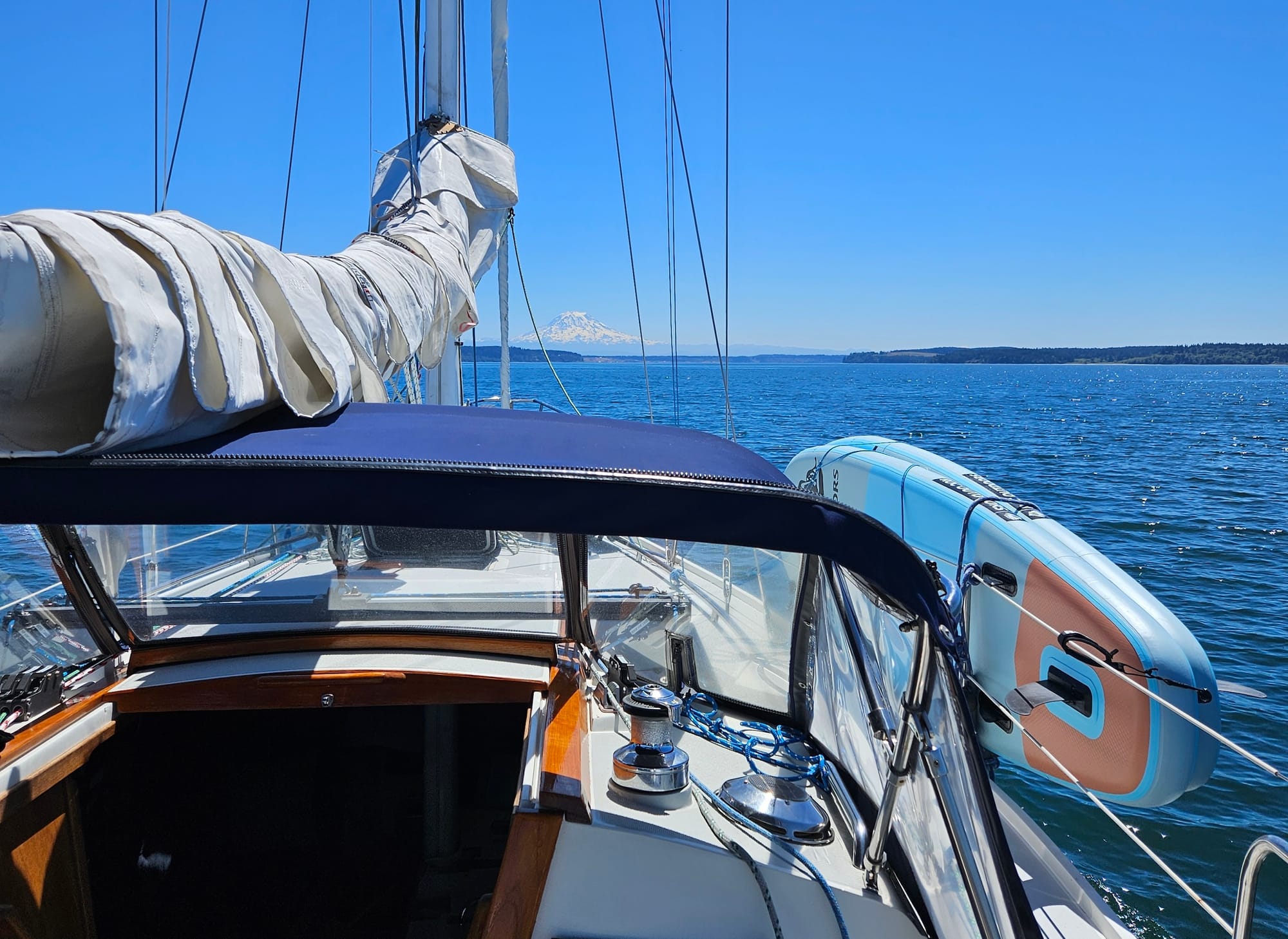
Drop stitch in its second decade
After paddling around some nice anchorages in Mexico earlier this year, we finally came around to the convenience of having inflatable SUPs onboard. They've been popular on the lakes, docks and as boat toys for years but prices are now as low as $200.
Inflatable SUPs first came on the market in 2007 with the adoption of drop stitch technology, which uses thousands of polyester threads between layers of PVC to create a light but rigid board that can be packed away. Drop stitch has been refined over time and now keeps millions of paddlers afloat. However, as a preview of what might come next, a U.K. company has developed technology intended to replace drop stitch using welded plastic construction and 3D design.
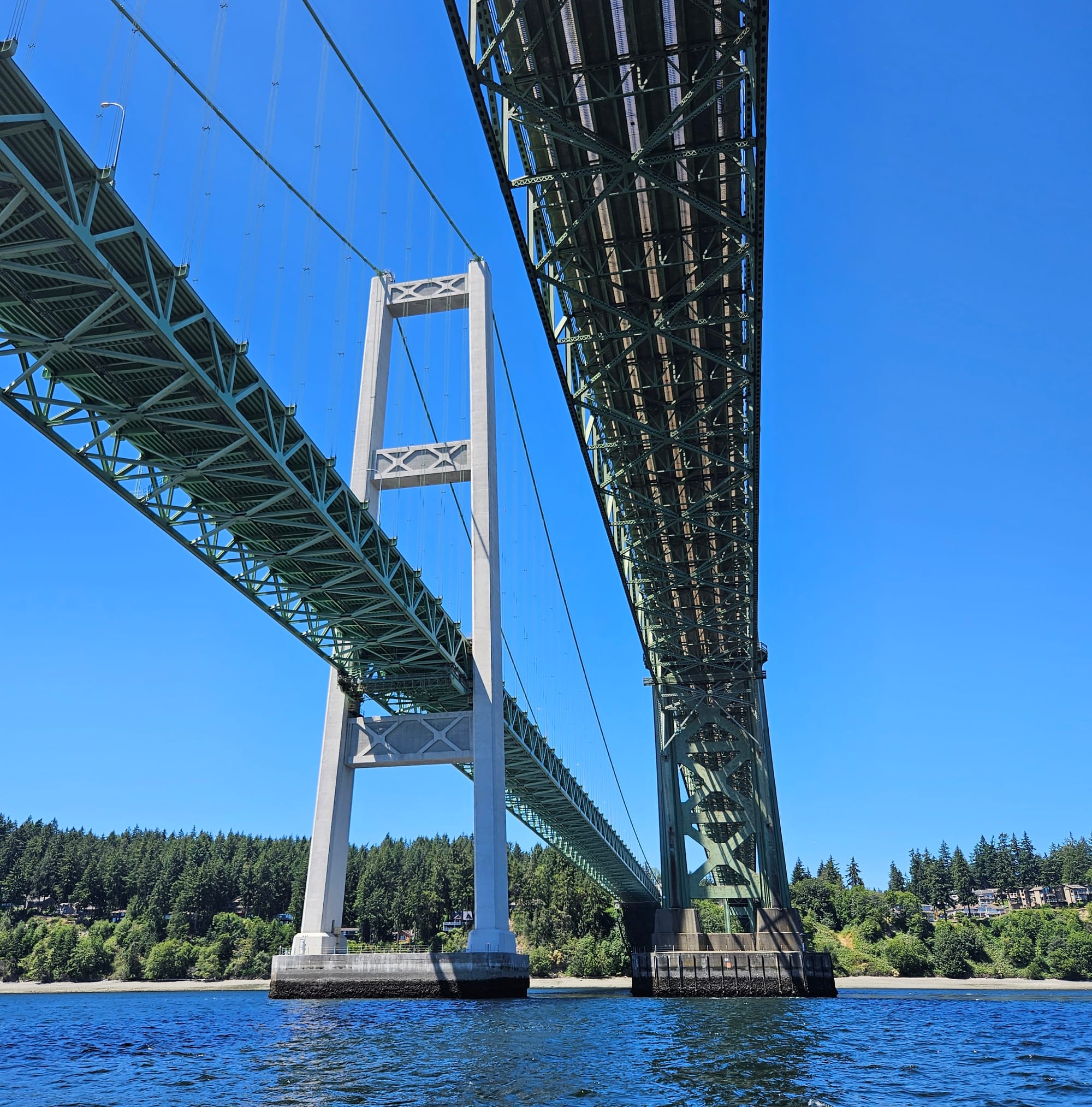
Puget Sound's permanent highways
Passing under the Tacoma Narrows Bridge reminded me of past ambitions for bridges or tunnels across other parts of Puget Sound. When Washington State took over the ferry routes in 1951 many viewed it as temporary until bridges were built.
Obviously that didn't happen and with both the state and counties investing in new routes, expanded passenger service and hybrid or electric vessels, the region's ferry system is entering a new era. Bridges seem even more unlikely when considering shipping routes to Seattle and Tacoma, as well as those who treasure island life. It was fun to be underneath the now-more-stable green spans of the Narrows and consider how things change - or don't - over 70 years!
Gig Harbor's ever-evolving waterfront
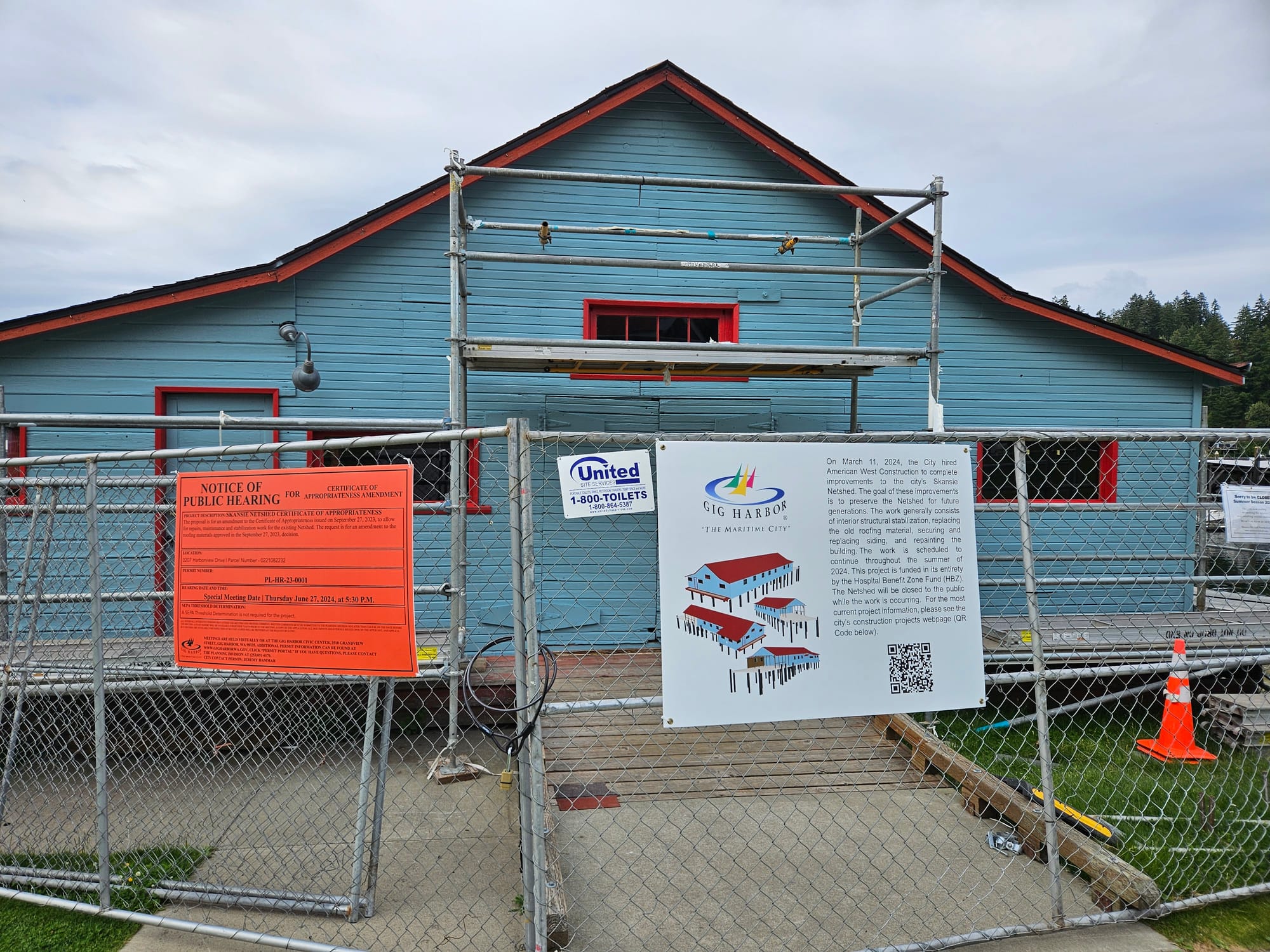
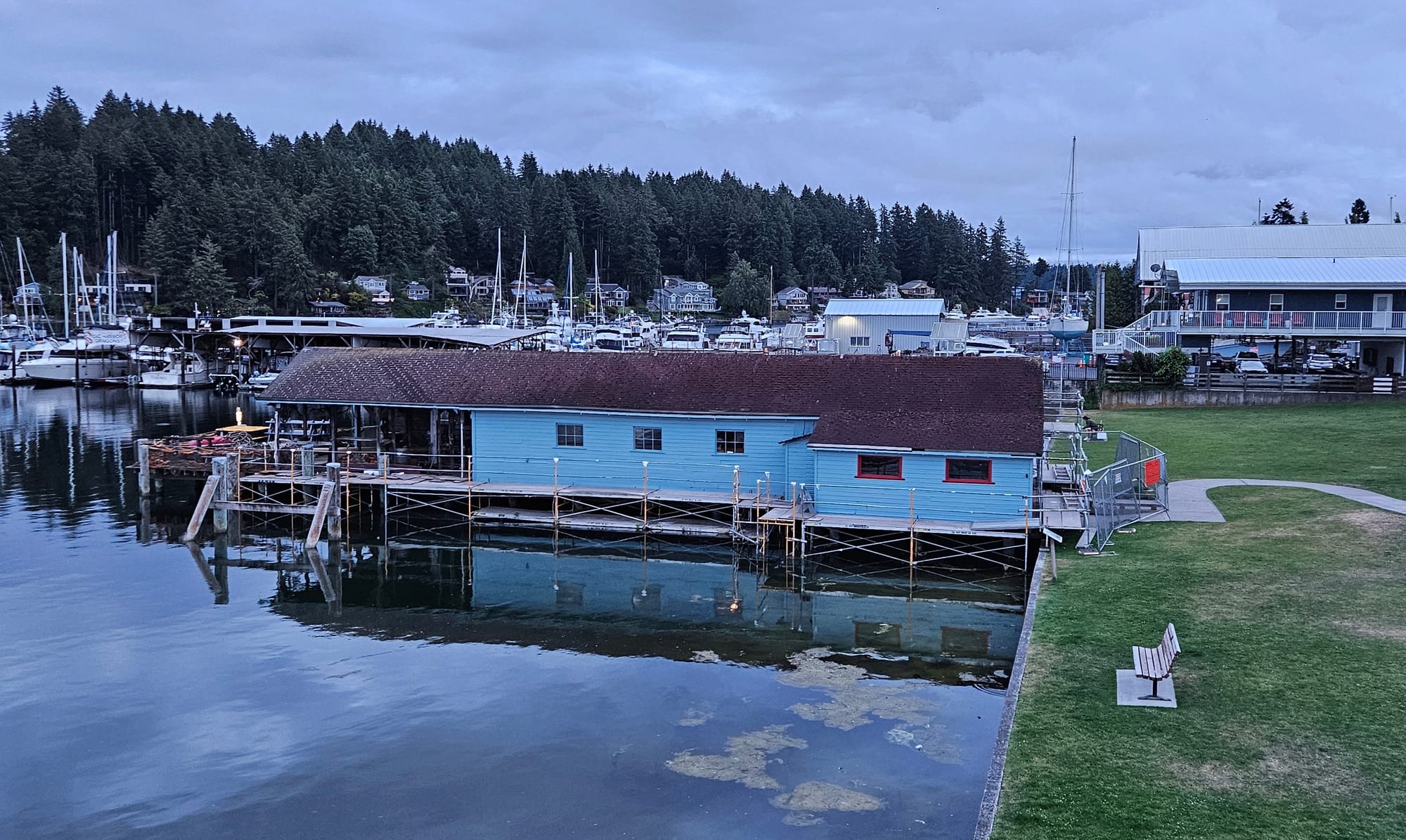
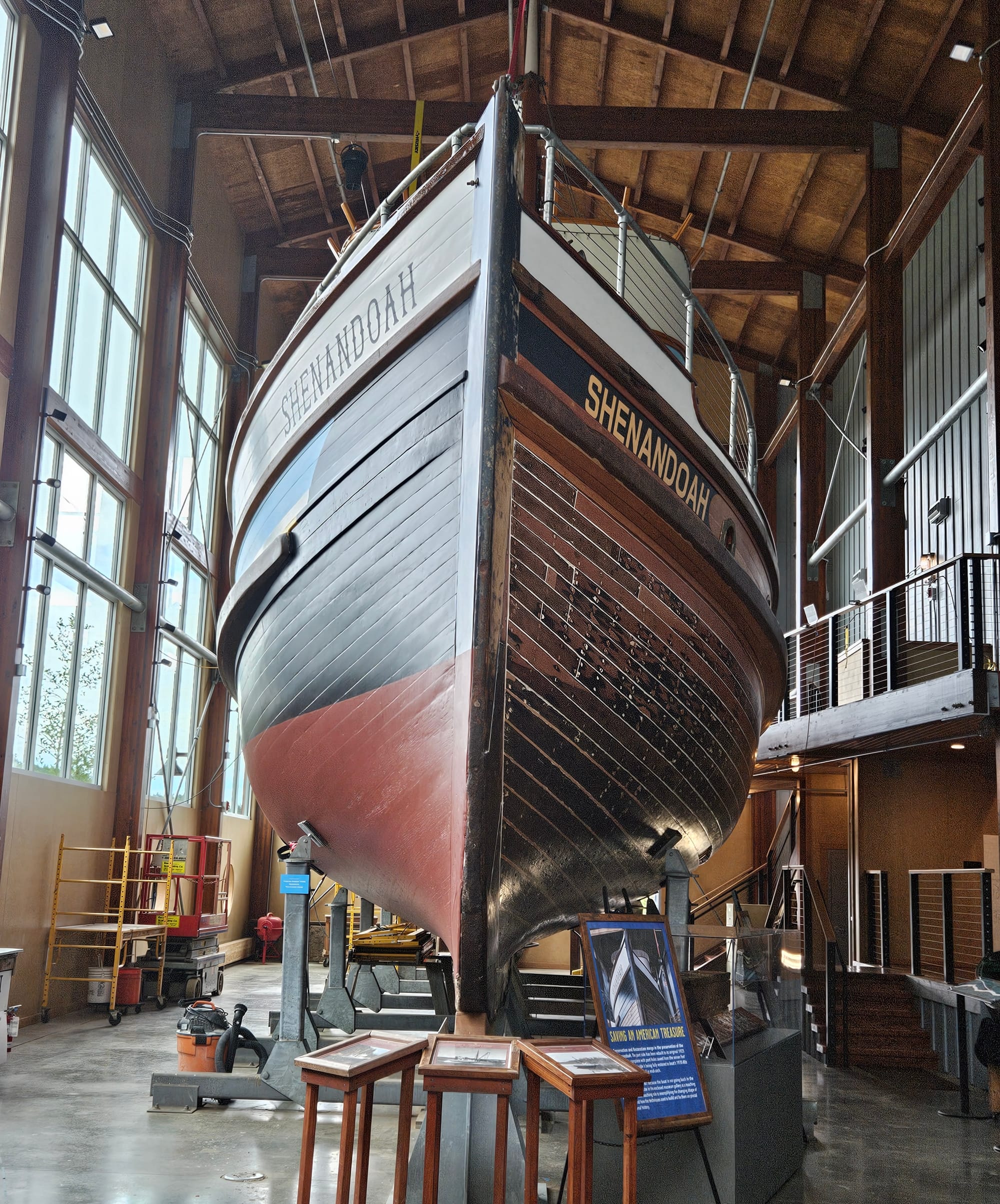
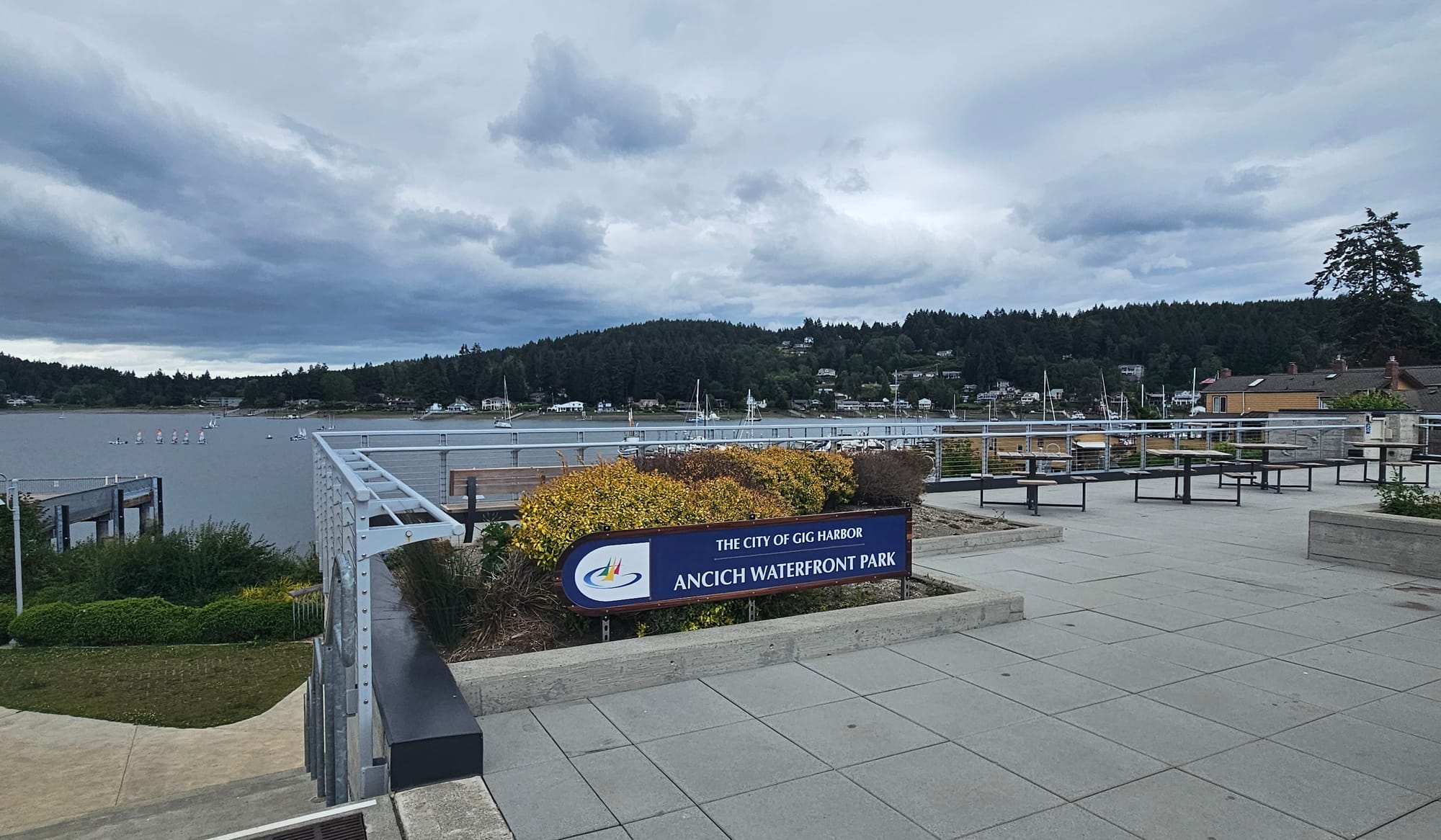
Top: Two views of the Skansie Netshed. Bottom: The F/V Shenandoah at the Harbor History Museum and one of several waterfront parks with public docks in Gig Harbor. (Cara Kuhlman/Future Tides Photos)
A long walk around the south side of Gig Harbor took me past old, new and in-the-works from modern city parks to a historic net shed getting some TLC and a new-to-me nonprofit community boatyard.
I also enjoyed seeing the current status of the 65-foot fishing vessel Shenandoah at the Harbor History Museum. The innovative restoration combines "what was" with "what is being preserved" and makes the most of the museum's decision to exhibit the purse seiner on shore. That decision might also be influenced by the logistical and financial challenges of keeping historical vessels afloat and relevant.
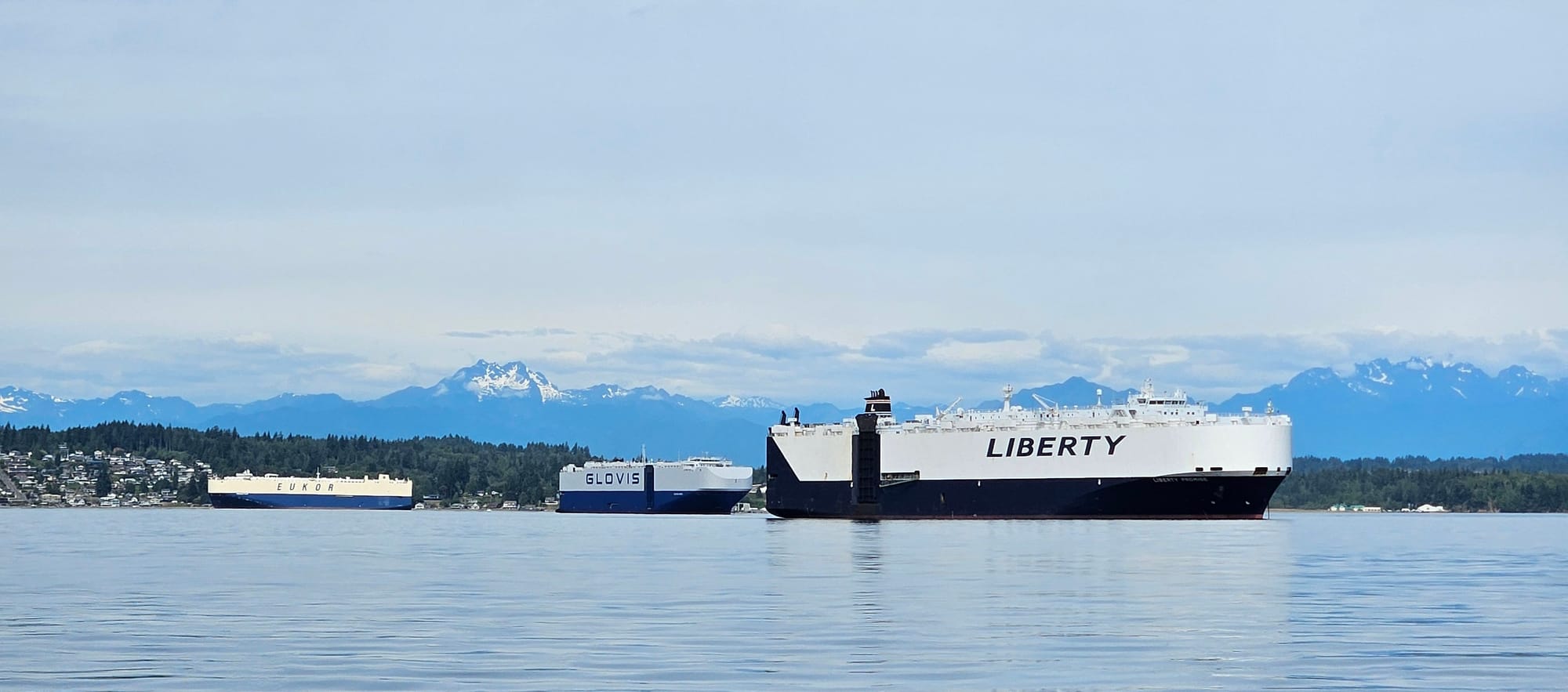
Recreation, raccoons and ro-ro ships
Passing Blake Island again on our way back north, the number of cargo ships anchored out felt like a flashback to 2021 when port backlogs resulted in large ships places residents may not have realize are designated anchorages.
Four roll-on/roll-off "ro-ro" ships were anchored on the north and northwest sides of Blake Island. I wonder if their crews also passed the time by watching a dozen or so raccoons combing the shore at low tide.
These vessels are designed for wheeled cargo which is "rolled on" and "rolled off" the ship. That includes automobiles so they're often called "car carriers" but can also transport many other types of cargo like construction equipment, tractors, trucks, etc.
Both the ports of Tacoma and Seattle have terminals but it's a major area of business for Tacoma. Two ro-ro vessels headed to Tacoma, the Liberty King and Morning Courier, recently anchored near Blake Island, which is near the pilot station and main shipping channel. One vessel anchored there before unloading, while the other remained anchored through the week.
When I reached out to the Northwest Seaport Alliance to find out why these particular vessels are utilizing the anchorage more right now, a spokesperson acknowledged it's atypical.
One possible factor may be a downturn in the auto market, which keeps dealership lots full and limits space for offloading new vehicles.
Enjoy the sunniest and busiest season, but arguably not the only or best season, for boating.
Update 7/24/24: Added ro-ro vessel information from the Northwest Seaport Alliance


